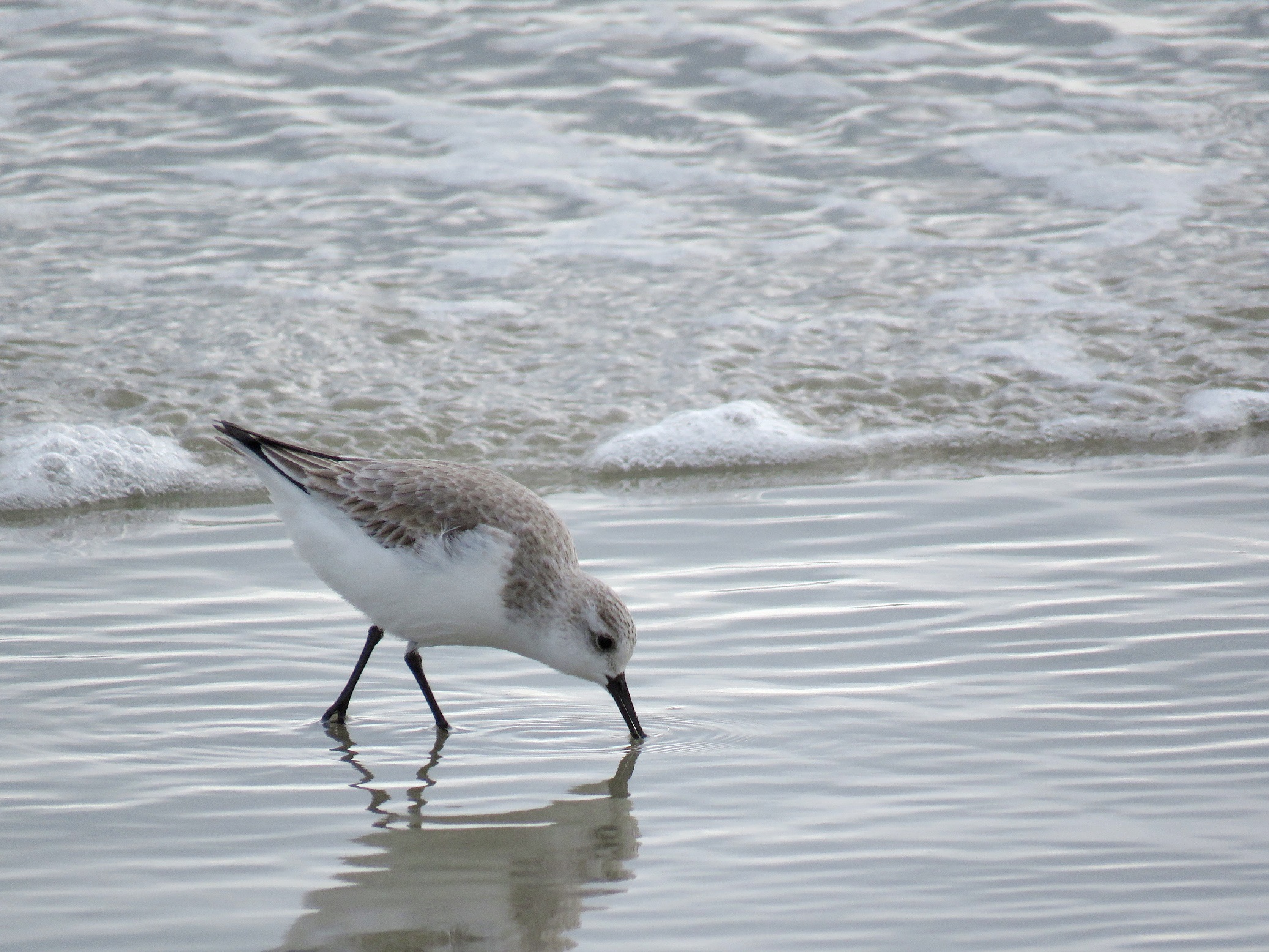
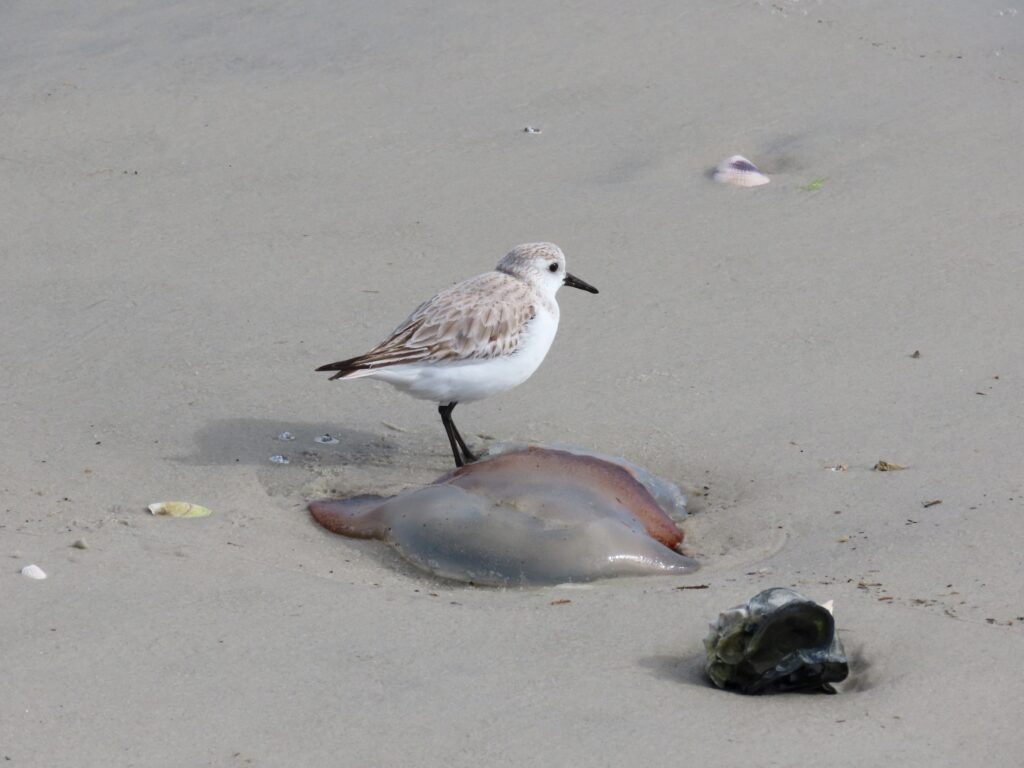
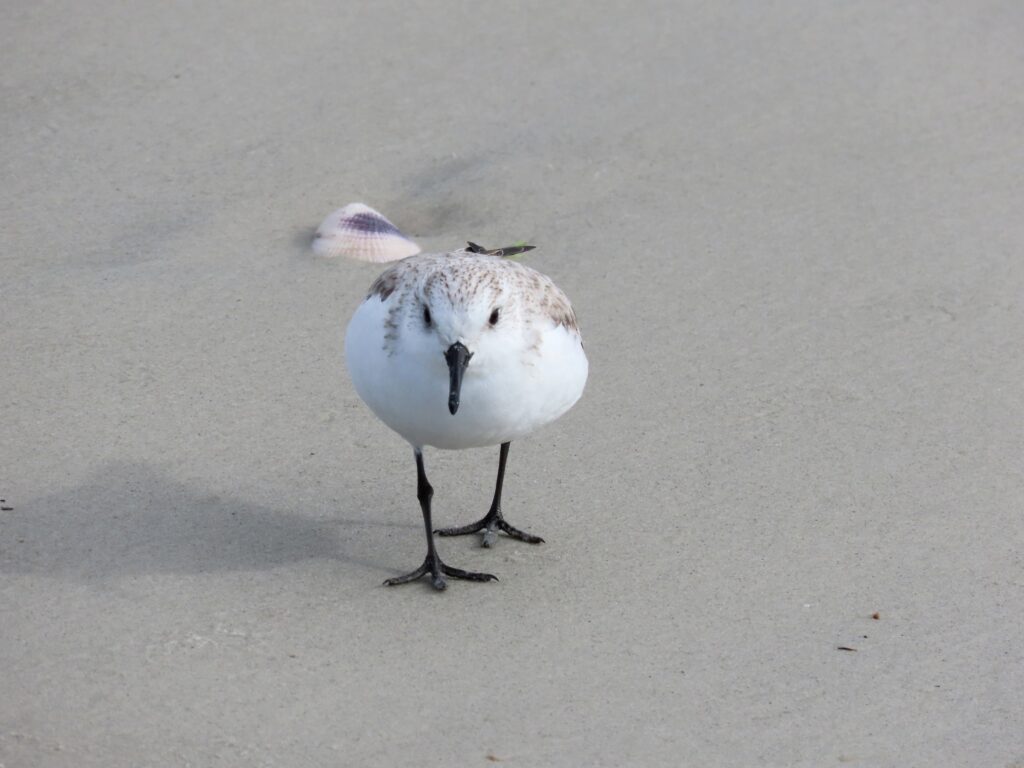
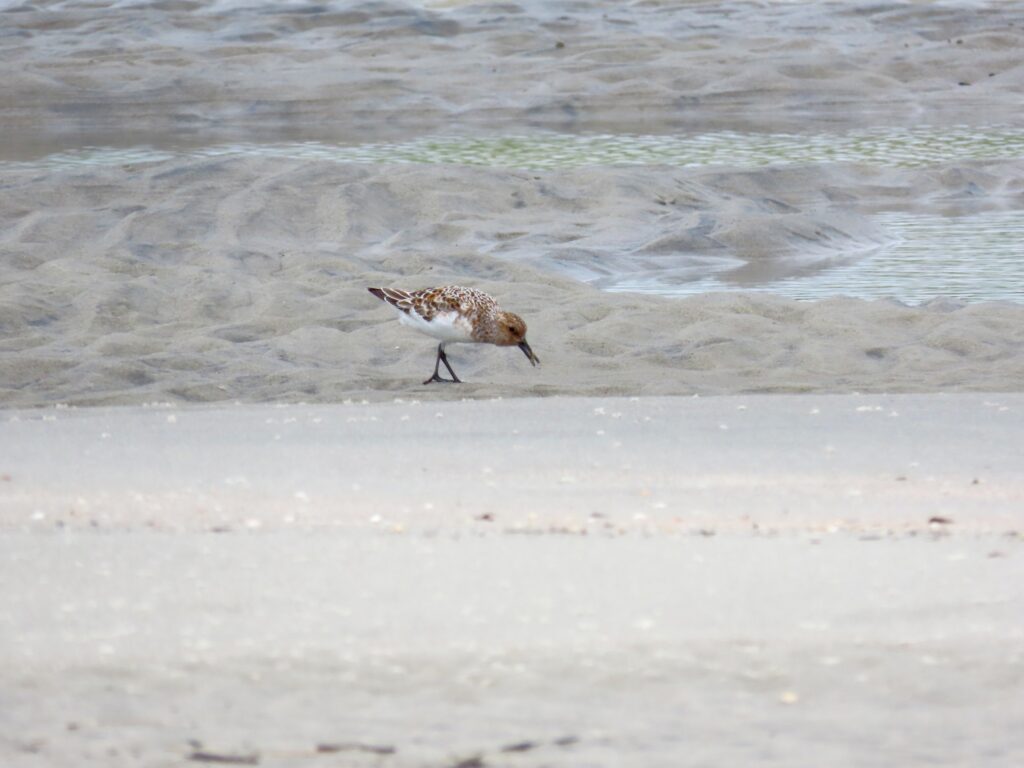
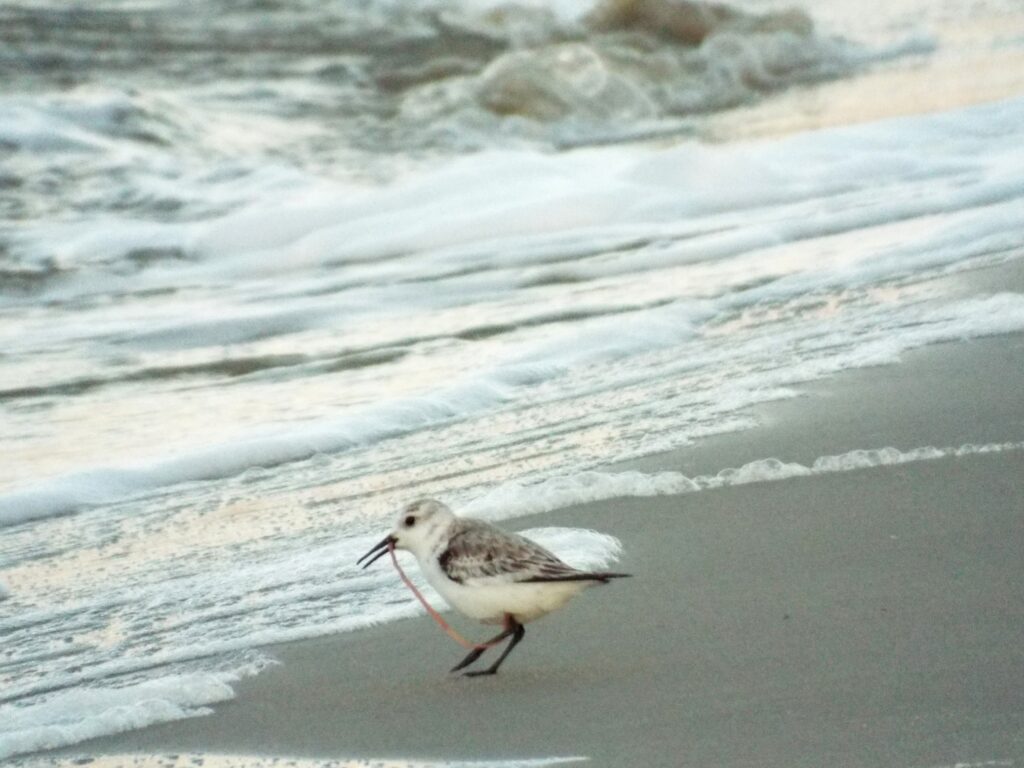
This week for Flora and Fauna Friday, it’s the original beachcomber, the Sanderling (Calidris alba).
A trip to a Lowcountry beach isn’t complete unless you spy a Sanderling. They’re by far our most common beach-going shorebird and a regular sight on any barrier island. In fact, they’re a cosmopolitan species found on shorelines throughout the globe. Sanderlings belong to the diverse “Peep” genus, Calidris, whose members are all small, compact shorebirds. Peeps can be notoriously hard to distinguish from one another. Thankfully, Sanderlings are one of the easier species to identify. Overall, they’re middle of the road in size and shape, being most similar in form factor to a Dunlin. But, unlike a Dunlin, their bill is short and unmarked. Looking closer, they have black legs, a black bill, and, in winter, a pale plumage of snow-white below and aluminum gray above. In summer, their head and wings warm to a mottled rusty-orange and ebony-black as they prepare for a long flight north to breed in the Arctic Circle. Juvenile birds stick around in South Carolina over summer and carry their winter plumage, but with a back mottled with black blotches. Another unique feature of the Sanderling, which can help with picking them out of a crowd, is that they only have three toes, lacking the fourth “spur” toe on the rear of their foot. This allows for their unique running gait.
Sanderlings feed on invertebrates that get washed ashore by the tides or that wriggle out of the dampened sand. Sprinting and zig-zagging, they drift along the seashore; dodging wave breaks as they pluck morsels from the wet sand. Often times, darting towards the receding sea to snatch up zooplankton thrown ashore before hightailing it uphill to avoid getting swamped by the surf. This behavior of mad dashing down the beach, pencil thin legs ablur punctuated by whiplash inducing snack breaks, makes this little white shorebird one of our easiest to spot, and most endearing to watch, when our paths cross where land ends.